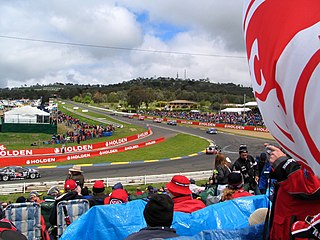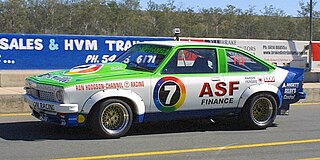History
Beginnings
The series began as a second and third tier collection of national motor racing series in 2005 providing a home for series such as Formula Holden, Formula 3, Sports Sedan, Production Cars, Truck Racing, Saloon Cars, Commodore Cup and Australian Touring Car Challenge. A successful 2005 series was offset by trouble brewing as CAMS who sanctioned the series wanted to de-register series with dropping numbers, while other series, led mainly by Formula 3 were looking for increased exposure to their series. What resulted was division amongst the AMRS categories, the majority of whom left to join the Shannons Nationals series of categories sanctioned by CAMS while the AMRS itself made the transition to AASA sanctioning.
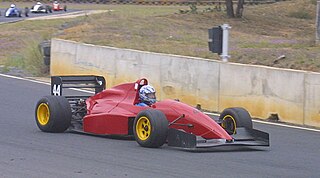
Formula Holden was an Australian open wheel racing category introduced in 1989.
Australian Formula 3 has been the name applied to two distinctly different motor racing categories, separated by over twenty years.
The Australian Production Car Championship is an Australian motor racing title for production cars, sanctioned by the Confederation of Australian Motor Sport (CAMS). The championship was first contested in 1987 and from 2008 to 2015 the title was awarded to the most successful driver in the annual Australian Manufacturers' Championship series which ran on the Shannons Nationals Motor Racing Championships program.
Without the CAMS categories that filled half of the 2005 program some new categories had to be created, with the intent of capturing categories that had been disenfranchised by CAMS. The series was centred on existing categories, [1] the popular Touring Car Challenge was a mixed bag category made up of cars left over from several categories, Group A touring cars not quite old enough the race as a historic category, older V8 Supercars no longer allowed to enter the second tier Fujitsu V8 Supercars Series, and cars from Super Touring and Future Touring categories whose series had died in the early 2000s. Thundersports was made up of a category called Future Racers, championed by Peter Brock and Ross Palmer of PROCAR fame it had never taken off and CAMS had refused to sanction the category as it was broadly very similar to the Aussie Racing Cars class. Several cars had been built and made a natural core for a sports car class and the regulations were opened for several Sports Prototype classes, with European LMP3 and the motorcycle powered Supersports classes targeted although current outright Le Mans cars were theoretically permitted. Formula 4000 , the new name for Formula Holden also fronted, with the class expanded to include OzBOSS, a local variation of the European Formula BOSS (Big Open Single Seater), designed to encourage a wide variety of open wheel racing cars.
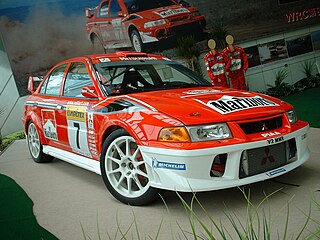
Group A was a set of motorsport regulations introduced by FIA covering production-derived vehicles intended for outright competition in Touring car racing and Rallying. In contrast to the short-lived Group B and Group C, the Group A referred to production-derived vehicles limited in terms of power, weight, allowed technology and overall cost. Group A was aimed at ensuring a large number of privately owned entries in races.
Super Touring, Class 2 or Class II was a motor racing Touring Cars category defined by the Fédération Internationale de l'Automobile (FIA) for national touring car racing in 1993. It was based on the "2 litre Touring Car Formula" created for the British Touring Car Championship (BTCC) in 1990. The FIA organised a World Cup for the category each year from 1993 to 1995, and adopted the term "Super Tourer" from 1995.
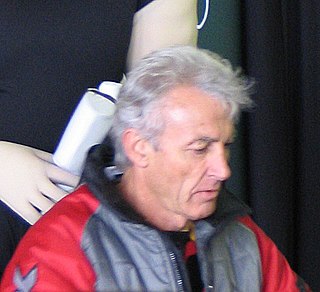
Peter Geoffrey Brock, otherwise known as "Peter Perfect", "The King of the Mountain", or simply "Brocky", was one of Australia's best-known and most successful motor racing drivers. Brock was most often associated with Holden for almost 40 years, although he raced vehicles of other manufacturers including BMW, Ford, Volvo, Porsche and Peugeot. He won the Bathurst 1000 endurance race nine times, the Sandown 500 touring car race nine times, the Australian Touring Car Championship three times, the Bathurst 24 Hour once and was inducted into the V8 Supercars Hall of Fame in 2001. Brock's business activities included the Holden Dealer Team (HDT) that produced Brock's racing machines as well as a number of modified high-performance road versions of his racing cars.
Production Touring Cars was a variation of the cars eligible for Australian Production Car Championship, although there was an emphasis placed on cars with as few modifications as possible from road specification, something which the APCC no longer represented. 3.3 litre Holdens was a Victorian-based variation of the popular entry level HQ Holden category. Unlike HQ Holdens where only the HQ model of Holden Kingswood was permitted, later models HJ, HX and HZ were also permitted. Classic Touring Cars was more or less a direct copy of Group N Historic Touring cars. Super Tin Tops was a touring car type of category intended for slower and less modified cars than those in the Touring Car Challenge, the obvious targets were competitors in Improved Production and Sports Sedans and more limited categories like Saloon Cars and Commodore Cup.
Controversially, Stockcar Thunder Road was included, intending to provide the once popular Australian NASCAR competitors a category to race in, however after much hype and promotion no competitors emerged.
The National Association for Stock Car Auto Racing (NASCAR) is an American auto racing sanctioning and operating company that is best known for stock-car racing. Its three largest or National series are the Monster Energy NASCAR Cup Series, the Xfinity Series, and the Gander Outdoors Truck Series. Regional series include the NASCAR K&N Pro Series East and West, the Whelen Modified Tour, NASCAR Pinty's Series, NASCAR Whelen Euro Series, and NASCAR PEAK Mexico Series. NASCAR sanctions over 1,500 races at over 100 tracks in 48 US states as well as in Canada, Mexico, and Europe. NASCAR has presented races at the Suzuka and Motegi circuits in Japan, and the Calder Park Thunderdome in Australia. NASCAR also ventures into eSports via the PEAK Antifreeze NASCAR iRacing Series and a sanctioned ladder system on that title.
Continued growth
The pre-existing categories grew promisingly with Touring Car Challenge and Thundersports well supported. Production Touring developed its own group of competitors. OzBoss was slow to take off and was quickly merged into Formula 4000 grids. Similarly Super Tin Tops was slow to gather momentum and some Production Sports Car type vehicles were included and Classic Touring Cars were merged as well.
Despite this the series 2006 series ended promisingly and most categories continued to grow into the 2007 season. The Inter Marque Championship for production sports cars was a successful addition to the series, bringing large fields. Another addition was the X Challenge series, providing a destination for competitors in the collapsed Lotus Trophy series, a one make series for racers of Lotus Exige and Lotus Elise cars.

The Lotus Exige is a British two-door, two-seat sports car made by Lotus Cars since 2000. Originally a more-hardcore coupé version of the Lotus Elise roadster, since the Series 3 the Exige has been the larger-engined model of the family - using a V6 engine in place of the Elise's straight 4 with convertible versions of both available.

The Lotus Elise is a two-seat, rear-wheel drive, mid-engined roadster conceived in early 1994 and released in September 1996 by the British manufacturer Lotus Cars. The Elise has a fibreglass body shell atop its bonded extruded aluminium chassis that provides a rigid platform for the suspension, while keeping weight and production costs to a minimum. It is capable of speeds up to 240 km/h (150 mph). The Elise was named after Elisa, the granddaughter of Romano Artioli who was chairman of Lotus and Bugatti at the time of the car's launch.
2008 season and legacy
The series was retagged as the Australian Motor Racing Championships for the 2008 season. However the new season has seen entries drop across the board, a near nationwide trend but the AMRC has been hit harder than the average. Formula Holden has dwindled to less than a handful of cars and OzBoss, which grew promisingly in 2007 has dwindled also. Thundersports became only contested by the former Future Racers. The faster Sports Prototpyes, typified by the West WR1100 cars have been pushed aside into a new category ProtoSports but because of low numbers has been merged into the OzBoss grids. Inter Marque has left AMRC and the new sports car series, Pirelli Gran Turismo Championship, has been poorly supported. The April round, [2] held at Calder Park Raceway has seen not a single grid, even after merging two or three together, break out of ten cars. The immediate future for the AMRC will be challenging if it can maintain viability. Rounds 5 and 6 did not take place with Round 7 likewise having been cancelled. The series subsequently collapsed. Surviving categories either transitted to CAMS sanctioned motor racing events (like Inter Marque Challenge, and ProtoSports (who eventually became Sports Racer Series) or moved into a new organisation independent of both CAMS and AASA called iRace, most visibly Production Touring Cars, OzBoss and the former Future Racers.


